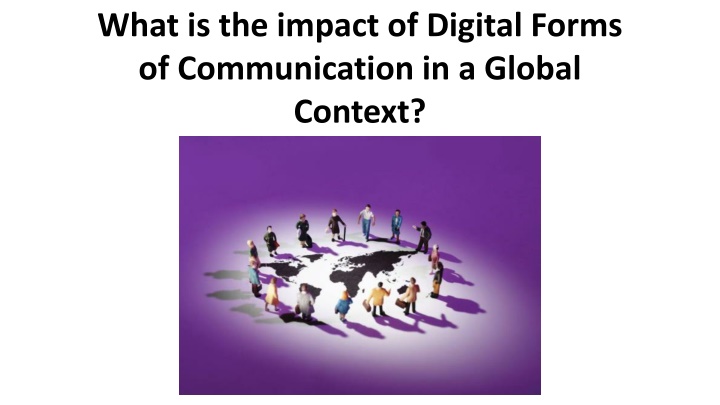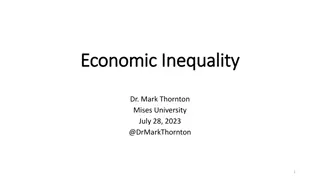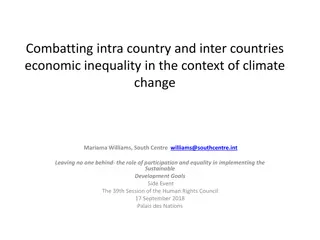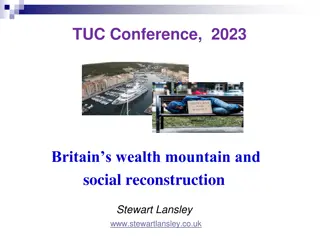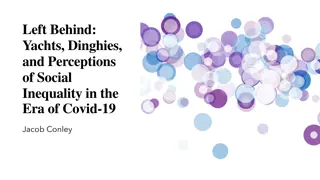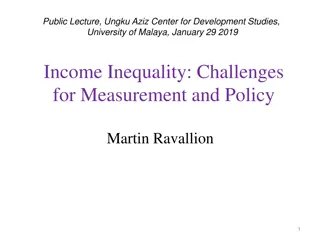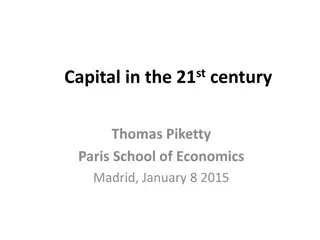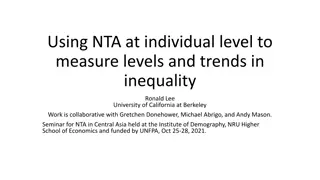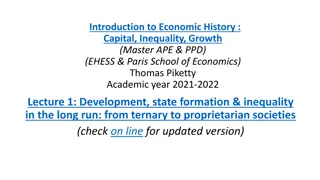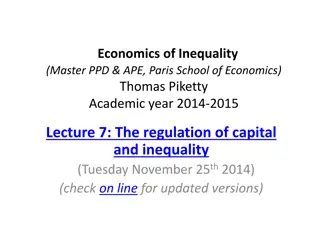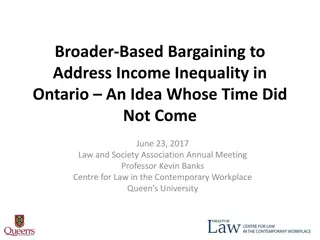Impact of Digital Communication on Social Inequality
The impact of digital forms of communication in a global context highlights the existence of a digital divide based on social inequality, particularly regarding access to information and communication technologies. This digital gap is evident within countries like the UK, where disparities exist between individuals, households, and age groups in terms of internet usage. Despite efforts to bridge this gap, there are challenges related to poverty, economic barriers, and varying levels of digital literacy. The global digital divide also emphasizes differences in access to digital communication technologies between developed and developing countries. Research shows that addressing the digital gap requires more than just providing access; individuals must also be equipped with the necessary skills to utilize digital tools effectively.
Download Presentation

Please find below an Image/Link to download the presentation.
The content on the website is provided AS IS for your information and personal use only. It may not be sold, licensed, or shared on other websites without obtaining consent from the author.If you encounter any issues during the download, it is possible that the publisher has removed the file from their server.
You are allowed to download the files provided on this website for personal or commercial use, subject to the condition that they are used lawfully. All files are the property of their respective owners.
The content on the website is provided AS IS for your information and personal use only. It may not be sold, licensed, or shared on other websites without obtaining consent from the author.
E N D
Presentation Transcript
What is the impact of Digital Forms of Communication in a Global Context?
What is the impact of Digital Forms of Communication on social inequality The digital divide Introduction A digital divide refers to social inequality according to a person s access to, use of, or knowledge of information and communication technologies (ICT). The divide within countries, such as the digital divide in the United Kingdom, may refer to inequalities between individuals, households, age, or geographic areas. The gap in a digital divide may exist for a number of reasons. One telling fact is that "as income rises so does Internet use". Most commonly therefore, a digital divide stems from poverty and the economic barriers that limit resources and prevent people from obtaining or using newer technologies. However, research shows that the digital divide is more than just an access issue and just providing the necessary equipment will not close the gap. Individuals also need to know how to make use of the new digital forms of communication once they have access to them. For example 44.6 million adults (87%) in the UK had used the Internet. Almost all (99%) of 16 to 24 year olds have used the Internet, compared with 37% of adults aged 75 years and over (ONS 2014) suggesting that although a majority of households in the UK now have access to the internet, there is still a digital divide in relation to age and ability, understanding and use of the internet. The global digital divide describes global differences between access to and use of digital forms of communication between developed and developing countries. The Internet is expanding very quickly, and not all countries especially developing countries are able to keep up with the constant changes.
The Digital Divide in the UK: Groups / People Reasons Impact
The Digital Divide in the UK: Groups / People Reasons Impact
Researching the digital divide in the UK: 1. Why is the digital divide and young people an under researched area? 2. How many/What percentage of people in the UK have access to a computer? 3. How many/What percentage of people in the UK have access to the internet? 4. Is internet usage increasing or decreasing in the UK? How do you know this 5. Which area of the UK has the highest proportion of internet users? 6. Which area of the UK has the lowest proportion of internet users? 7. Are men or women more likely to be internet users in the UK? What do the statistics show? Using your list of people from task 1, find a statistic that proves you were right and they are the least likely to have access to a computer or internet in the UK
Digital Divide: Focusing on the digital divide between young people and children in the UK Little academic research has addressed the digital divide among children and young people. Most research has focused on the divide in access to and use of the internet amongst adults, even though young people s lives are increasingly influenced by digital communication technologies at home, at school and socially. Little research has addressed children and young people s access to the internet or the reasons why some of them make low or no use of the internet. This could be because young people are perceived to be ahead of the adult population and are often referred to in the media as the internet generation . However does the lack of research mean that young people have no difficulties accessing and using the internet and there is therefore no digital divide between them? As part of a broader, quantitative and qualitative research project on children and young people s use of the internet in the UK, UK Children Go Online (UKCGO), Livingstone and Helsper (2007) conducted 40 minute, face to face, computer-assisted interviews with 1,511 children and young people aged 9-19 in their own homes, as well as 906 questionnaires completed by some of their parents. Random Location sampling across the UK was used to gain respondents. Livingstone and Helsper s findings reveal inequalities amongst young people by age, gender and class status in relation to their quality of access to and use of the internet. For example, boys, older children and middle class children all benefit from more and better quality access to the internet than girls, younger and working class children. Interestingly even among those young people who don t have internet access at home, boys and older children can still be seen to use the internet more. However, the greater use of the internet among middle class children appears to be a result of their increased home access. Therefore, according to Livingstone and Helsper, policy should focus on reducing the differences across households to improve internet access for working class young people, but not focus on inequalities within households such as the age or gender gap in internet usage. Why is the digital divide and young people an under researched area? What are the strengths & weaknesses of conducting 40 minute, face to face, computer assisted interviews when researching children and young people? Think practically and ethically.
Which young people are least likely to have access to and use the internet according to Livingstone and Helsper? Why might these groups of young people be the ones that use the internet the least? Try to give different reasons for each group. Livingstone and Helsper suggest that policy should focus on the class divide in internet access and use amongst young people, why might this be?
The digital divide globally Censorship Use examples of North Korea, Iran or China to show how governments can censor access to particular internet sites, social media or the whole internet in general. Language Consider how the majority of websites visited are in English and the barriers this creates for countries where English is not spoken or taught. Economy Lack of access due to material deprivation in developing countries e.g. lack of electricity, broadband, computers, mobile phones etc. Political Unrest Assess specific examples of countries from the media which have used digital forms of communication as social or political protests. Education Focus on literacy rates between and within countries and the impact this has on access to the internet. Religion Link to cultural defence and the specific example of Iran. Physical Access - Individuals need to obtain access to electricity, computers, landlines and networks in order to access the internet. Focus on limited access in developing countries as well as regional differences in richer countries Countries that can be considered include North Korea, Iran, Syria, Cuba, China, South Africa, Egypt, United States and Argentina.
Applying traditional theoretical explanations to the digital divide Define concept How this would explain the digital divide Functionalist - Value Consensus and Social Solidarity Feminist - Patriarchy and Gender role Socialisation
Applying traditional theoretical explanations to the digital divide Define concept How this would explain the digital divide Marxist Alienation Marxist - Ideological Control Weberian - Status/Consump tion
2 With reference to the Sources, to what extent have developments in digital forms of communication had a negative impact on young people? [10]
